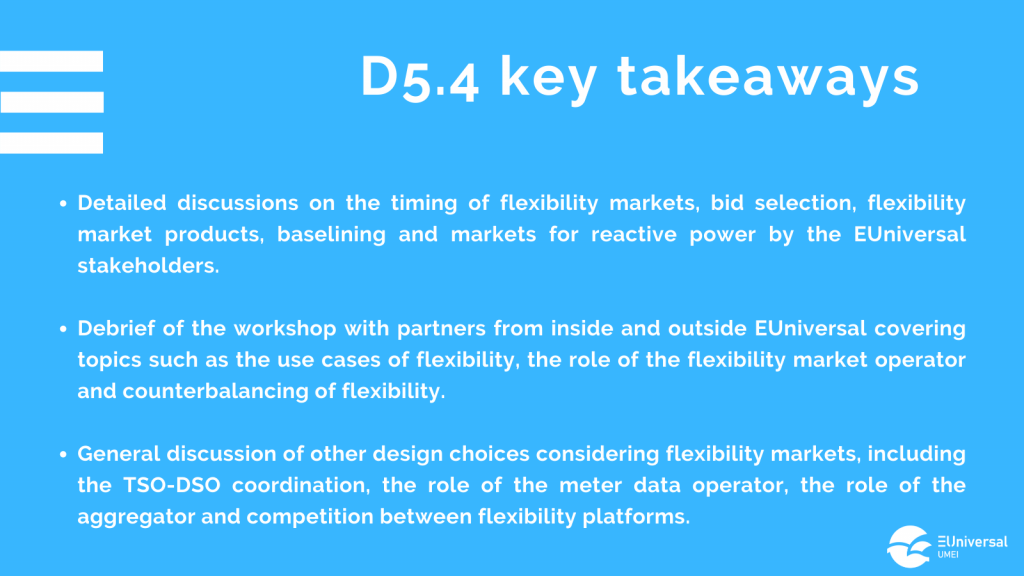The EUniversal project, funded by the European Union, aims to develop a universal approach for the use of flexibility by Distribution System Operators (DSO) and their interaction with the new flexibility markets, enabled through the development of the concept of the Universal Market Enabling Interface (UMEI) – a unique approach to foster interoperability across Europe.
Deliverable D5.4 aims to evaluate different implementation options of flexibility markets from a multi-stakeholder perspective and to support the flexibility market design of the EUniversal demos.
To collect the information of the different stakeholders, six internal EUniversal workshops and one workshop including both partners from inside and outside the EUniversal project were organized.
The deliverable is structured in four parts.
Chapter 2 outlines the methodology and course of the workshops, and Chapter 3 summarizes the business use cases and key characteristics of the three EUniversal demos.
The discussion and findings of the workshops are categorized into eight main design challenges that were most relevant for the EUniversal demos (Chapter 4) and four other design choices that must be considered when implementing flexibility markets (Chapter 5).
While a detailed discussion can be found in D5.4, an overview of the topics treated is given here:
Main design challenges of the EUniversal demos (Chapter 4)
- Why and how should we use flexible resources located at the distribution level?
- Where do flexibility markets fit within the existing wholesale and balancing market sequence?
- What is the future role of the flexibility market operator?
- How is the optimal bid selected, and which information needs to be shared to achieve this?
- What products should be traded in flexibility markets?
- What baseline approach should be used?
- Who should be responsible for counterbalancing the activated flexibility bids?
- How to organize markets for reactive power?
Other design choices considering flexibility markets (Chapter 5)
- What is the role of TSO-DSO coordination in the organization of flexibility markets?
- Is there a role for the meter data operator?
- Is there a role for the (independent) aggregator?
- Should competition between flexibility market platforms be allowed?

This deliverable was jointly produced by VLERICK, VITO, CENTRICA, COMILLAS, ENERGA, E.ON, E-REDES, INESC TEC, MITNETZ-STROM, NODES AND N-SIDE









